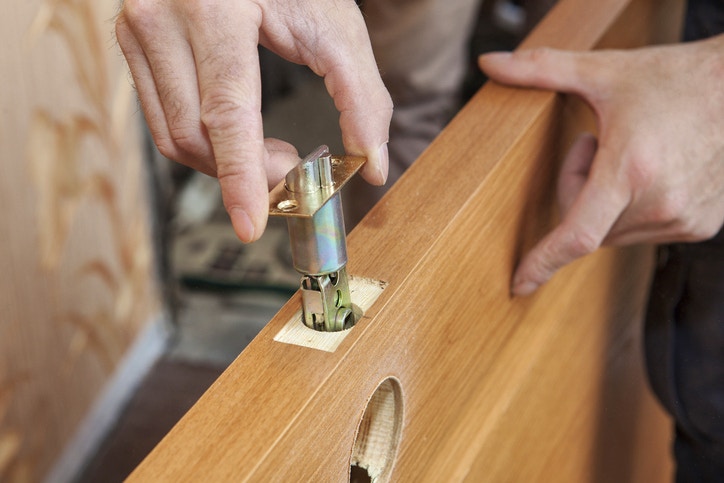Changing a door lock is something most people will need to do at one point or another. Here, we’ve put together what you need to know before you change your door locks in this quick-reference lock installation guide.
When to Change Your Door Locks
There are several reasons why you may need to change your door locks. If you’re moving into a new home, you’ll want to change your locks right away, as you don’t know who has copies of the keys. If you’re renting, ask your landlord if the locks have been replaced. If you’ve had a roommate or relationship change, it’s best to install new locks as well.
Lost keys are also an important reason to replace your locks. You don’t want your keys ending up in the hands of a stranger who might figure out where you live. It seems like a no-brainer, but never put your home address on your keys.
Additionally, old locks may need to be changed from wear and tear. Over time it may become difficult to lock and unlock your door using the key.
Rekeying vs. Relocking
Changing locks on a door can involve either replacing them or rekeying them. Both methods ensure that old keys will no longer open the lock. Replacing door locks involves removing the existing lock from the door and then installing a brand new lock in its place. Rekeying door locks involves realigning the pins and springs in the inner workings of the lock in order to match the lock to a new key.
How to Change a Door Lock
You’ll need your new lock and in most cases a measuring tape and screwdriver to complete the job.
Remove the old deadbolt. Locate the screws on the interior side of the lock (the side with the turner) and remove them, along with the turn plate. Open your door so you can see the side of the lock and locate and remove those screws as well. Remove the rest of the deadbolt hardware from the door.
Insert your new deadbolt. Take your new deadbolt and install it where the old one was. Use the provided mounting hardware in your deadbolt assembly kit to secure the hardware in place.
Insert your new lock. The deadbolt will have slots where you can fit in both the locking/key part and the turning part of your new lock. Assemble the pieces where they need to go, and secure them in place with the screws provided in your deadbolt assembly kit.
You’re done! Now test your new lock to make sure it works properly.
Consider Smart Locks
If you’re changing your locks, consider smart locks. Smart locks are keyless solutions that let you lock and unlock from anywhere, give guests unique passcodes, and get alerts whenever someone comes or goes. You can control it all from your smart device.
For professional advice on how to best secure your door and other entry points in your home with smart security and home automation products, contact us today.
Categories: Locks, Safety, Safety Tips


